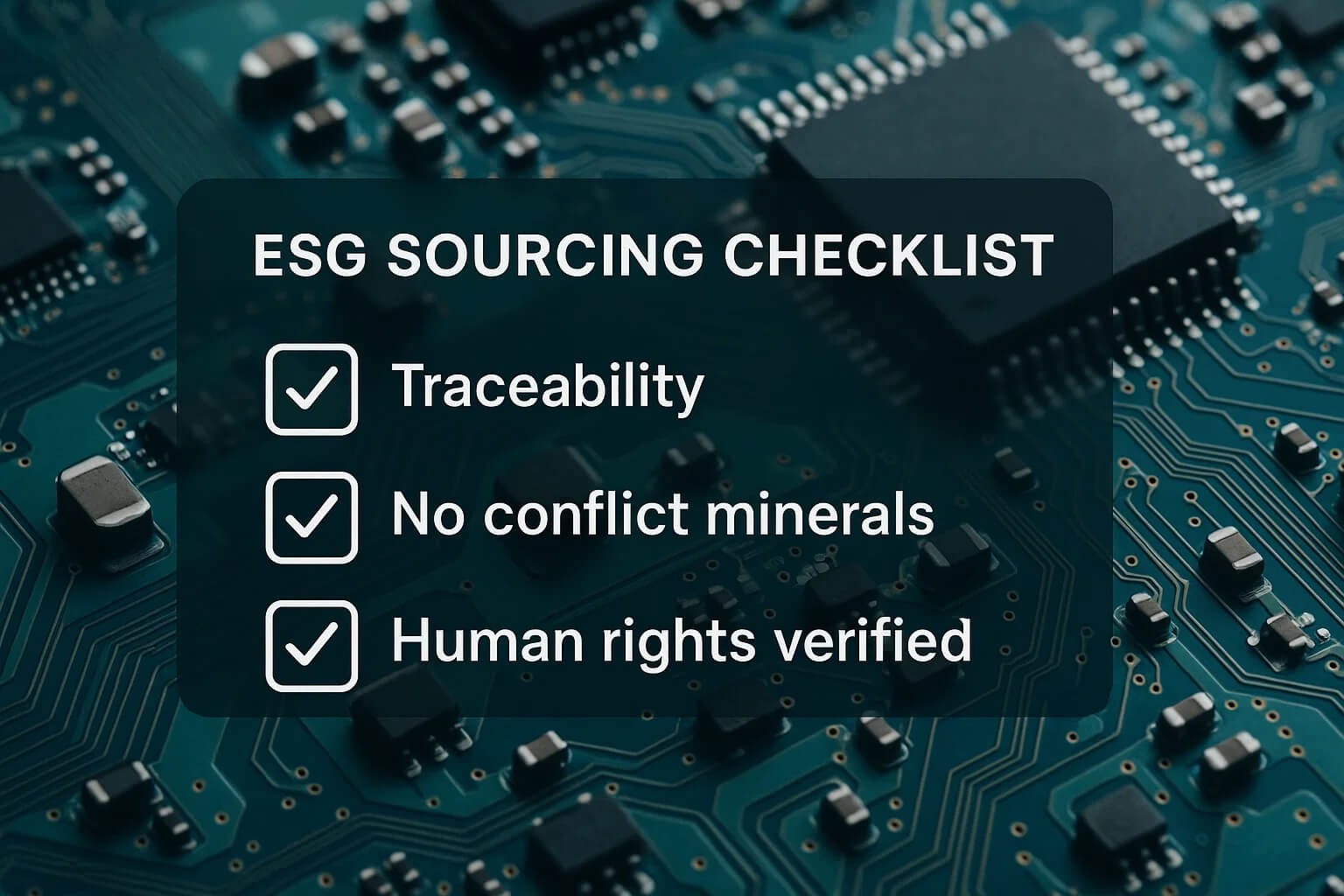In today’s interconnected but volatile marketplace, sourcing electronic components has become increasingly difficult to navigate. From semiconductor shortages to delays at key ports and rising raw material prices, procurement teams are under mounting pressure to secure supply without sacrificing cost or quality. Add to that shifting trade policies and evolving compliance rules, and it’s clear that traditional sourcing strategies are no longer enough.
We work closely with businesses across industries that rely heavily on electronics, from consumer goods and industrial automation to automotive and medical tech. This article draws from that experience to highlight the key sourcing challenges facing procurement teams in 2025 and shares practical strategies to build greater resilience, reduce risk, and improve long-term sourcing outcomes.
Today’s Toughest Sourcing Challenges in Electronics
The electronics supply chain remains under stress. While the pandemic may be behind us, its ripple effects continue. Delays at ports, container shortages, and inconsistent transport schedules are still disrupting timelines. Many of these issues are concentrated in key production regions such as China, Taiwan, and Vietnam, where even short-term shutdowns can have global consequences. Companies that relied on a lean, just-in-time approach have found themselves especially exposed.

Ongoing Component Shortages
Despite efforts to stabilize supply, component shortages persist. Semiconductors, sensors, and passive components like MLCCs are still in high demand. Lead times can stretch beyond six months, depending on the part. Allocation-based supply models often favor large-volume manufacturers, leaving mid-sized businesses waiting or scrambling for alternatives. In some cases, companies have been forced to redesign products to use what is available rather than what was originally specified.
Geopolitical and Trade Policy Risks
Trade tensions are reshaping sourcing decisions. US–China relations have triggered new tariffs and restrictions on critical technologies. Electronics buyers must now weigh the political landscape alongside traditional sourcing criteria like price and lead time. This is making supplier selection more complex, and more strategic.
Cost Volatility
Price fluctuations are hitting procurement teams on multiple fronts. Raw materials such as copper and rare earth metals continue to surge unpredictably. Labour and energy costs have also increased in manufacturing centres across Asia. With so many moving parts, calculating true landed cost is becoming harder. For many businesses, staying on budget requires not just better planning, but real-time data and closer supplier collaboration.
Risk Mitigation Strategies for Procurement Teams
Expand and Diversify Supplier Base
One of the most effective ways to reduce exposure is to avoid overreliance on a single supplier or country. Many companies are now exploring alternative manufacturing hubs such as Thailand, India, and Mexico to build regional flexibility into their supply chains. This approach not only reduces geopolitical risk but can also shorten lead times for specific markets.
Improve Planning and Forecasting
Demand planning is becoming more important, especially for long-lead-time components. Cross-functional collaboration between procurement, engineering, and production teams helps build realistic forecasts that align with actual product needs. Some businesses are adopting rolling forecasts and investing in demand-sensing tools to better respond to real-time market shifts.
Holding safety stock for key items is another option, though it requires balancing carrying costs with supply risk. For high-risk or critical components, many teams are shifting from just-in-time to just-in-case inventory strategies.
Strengthen Supplier Relationships and Monitoring
Strong supplier relationships can provide early warnings when things go wrong. Regular communication, quarterly business reviews, and performance tracking help build trust and transparency. Some companies are introducing shared risk models, such as dual-sourcing agreements or flexible order volumes, to align incentives.
Businesses are increasingly using supply chain mapping tools to identify second- and third-tier risks and prepare contingency plans accordingly.
Sustainability, Ethics, and Regulatory Pressures
Electronics manufacturers face a growing web of global compliance requirements. Regulations like RoHS (Restriction of Hazardous Substances), REACH (Registration, Evaluation, Authorisation and Restriction of Chemicals), and WEEE (Waste Electrical and Electronic Equipment) continue to evolve. Staying compliant means ensuring every component meets these standards, from raw materials to sub-assemblies.
Sourcing with ESG and Ethics in Mind
Buyers are under increasing pressure to demonstrate ethical sourcing practices. This includes ensuring materials are conflict-free and supply chains are free from forced labor. New regulations such as the EU’s Corporate Sustainability Due Diligence Directive and similar frameworks in North America require companies to trace their sourcing practices all the way to origin.

Beyond compliance, ESG performance now affects how investors, partners, and even customers view a business. Procurement plays a vital role here. Companies with transparent, traceable sourcing gain a competitive edge.
Preparing Your Supply Chain for What Comes Next
As technologies advance and global conditions shift, sourcing challenges will continue to evolve. Building resilience now means going beyond short-term fixes. Procurement teams must think holistically, which means combining diversified supplier networks with smarter planning, closer collaboration, and data-backed decision-making.
Investing in visibility, ethics, and digital infrastructure isn’t optional anymore. These are the levers that help businesses stay agile when markets become unpredictable. The companies that thrive will be those that treat sourcing as a strategic function, not just a cost center.
If your team is looking to improve supply chain resilience in electronics, at Source One we offer regionally grounded support and practical expertise to help you make confident, future-ready sourcing decisions.
